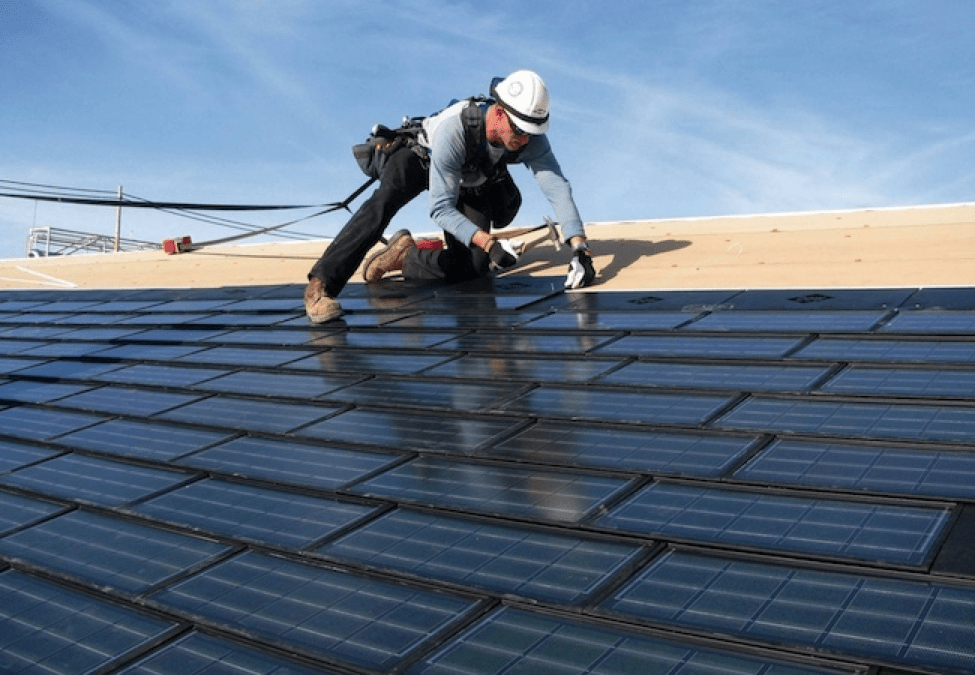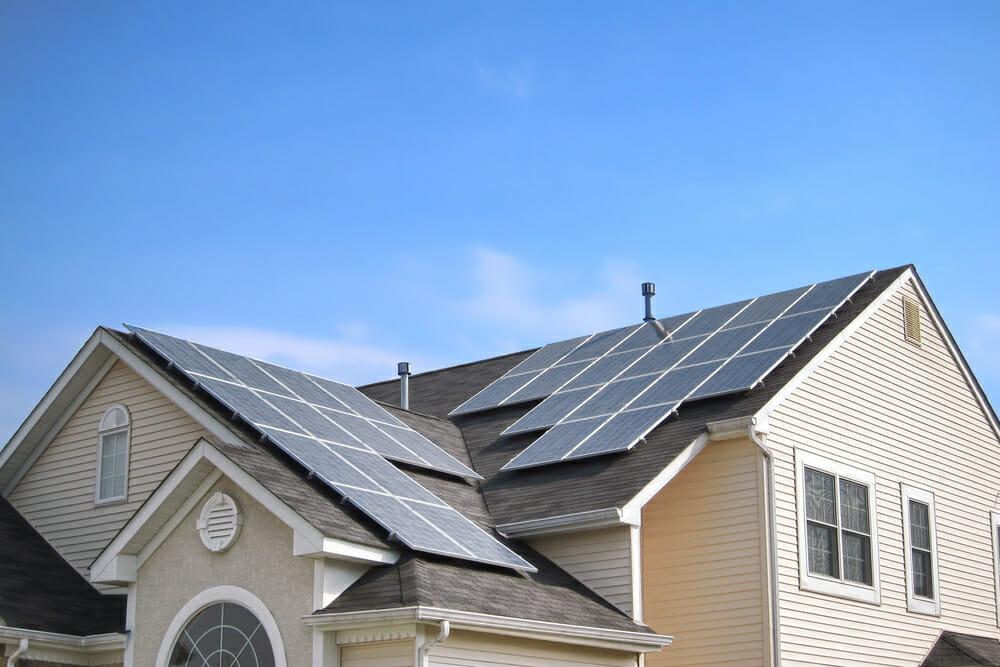What are the 4 Types of Solar Panels?
If you’ve already begun shopping the different types of solar panels, you’ve probably noticed that they don’t all look exactly alike. But it’s not just a cosmetic difference — solar panels don’t all perform the same way. Each of them have different capabilities, energy-efficiency levels, and total installation costs. The 4 most popular types of solar panels you can have installed include:
- Solar Shingles
- Polycrystalline Solar Panels
- Monocrystalline Solar Panels
- Thin Film Solar Panels
Wondering which types of solar panels are best for you? The best solar panel option for your home will depend on your budget and the cost to install solar energy, roof space, access to sunlight, and your desired energy efficiency.
1. Solar Roof Shingles
The newest solar panel option is the growing trend of installing solar roof shingles. They are the modern answer to having a beautiful roof that can mimic architectural asphalt shingle roofs. But they offer the added benefit of equipping your home with a solar energy system.
Solar shingles are as durable as regular asphalt shingles and protect your roof and home just as effectively. For each solar shingle installed, they can produce anywhere from 13 to 67 watts of solar energy. They can also withstand just about any weather element. But keep in mind that the cost to install solar shingles will be more than installing standard asphalt shingles.

2. Polycrystalline Solar Panels
Solar panels are made up of crystalline cells. A typical home rooftop solar panel contains up to 40 solar cells. There are two main types of solar panel cells: polycrystalline and monocrystalline. It’s important to understand the difference between the two because your choice will determine the cost and amount of roof space your solar installation requires.
Polycrystalline types of solar panels were developed first. These cells can be recognized within a solar panel for their rectangular shape, created when silicon is melted and poured into a mold. Industry professionals manufacture polycrystalline solar very effectively, as little silicon is wasted in the process. This contributes to the competitive pricing of installing polycrystalline solar panels or even solar leasing costs.
But polycrystalline cells are not as heat-tolerant or efficient as monocrystalline cells. Specifically, they do not generate as much electricity from the sun. This can affect factors like the amount of electricity you can sell from solar energy.
3. Monocrystalline Solar Panels
Monocrystalline solar panel cells tend to achieve higher levels of efficiency because they are made of more pure silicon. You will notice a uniformity in their coloring. Their cylindrical shape also helps these cells achieve higher efficiency. When choosing between a monocrystalline and polycrystalline solar panel system, it will be important to find your solar sun number score. This will allow you to find out how much potential your system will have with your location and the amount of sunlight it receives.
To make them, solar manufacturers carve silicon ingots into wafers. In the process, they smooth and round the cell edges. Because their form and content helps them produce more electricity, you will need fewer of them.
But monocrystalline cells also cost more to manufacture than polycrystalline solar panels. For this reason, they are more expensive to purchase. On the other hand, they tend to last longer, and they often come with long warranties. Both of types of solar panels can be installed on your roof or by installing solar panel mounts in a designated area of your land.
4. Thin Film Solar Panels
You may have heard of thin-film types of solar panels. They are a newer type of solar panel and are less frequently used for homes. But they are growing in popularity.
The thin-film panel gets its name from how it’s produced. Layers of semiconductor materials (silicon, cadmium telluride, and copper indium gallium selenide) are rolled out as a film on a surface.
Thin-film solar panels tend to be less efficient than crystalline solar panels, and it requires a lot of roof space. They also tend to degrade more quickly, so companies may offer shorter warranties to homeowners.
But the thin film is also inexpensive and more flexible than crystalline solar cells. They can be manufactured into shingles. So for those who don’t like the appearance of solar panels on a roof, thin-film is a good alternative. There may be local solar rebate incentives for installing these types of solar panels.
Keep in mind that solar manufacturing is a very competitive field. Researchers keep coming up with ways to make solar cells more efficient. The latest technologies use solar inks, dyes, mirrors, and plastics.

